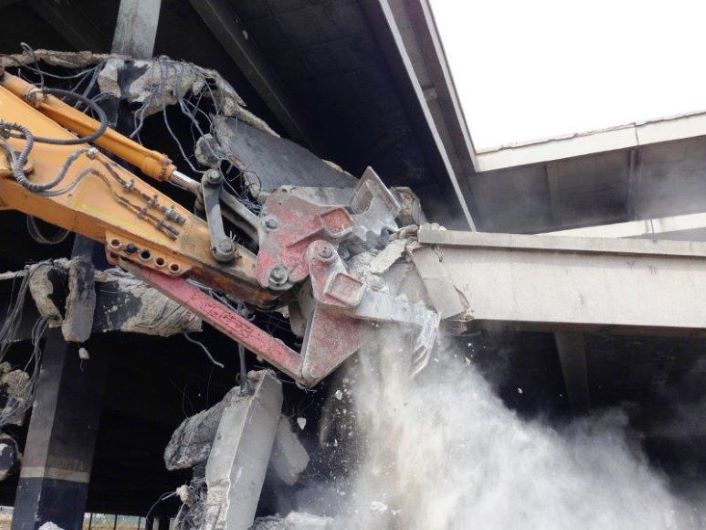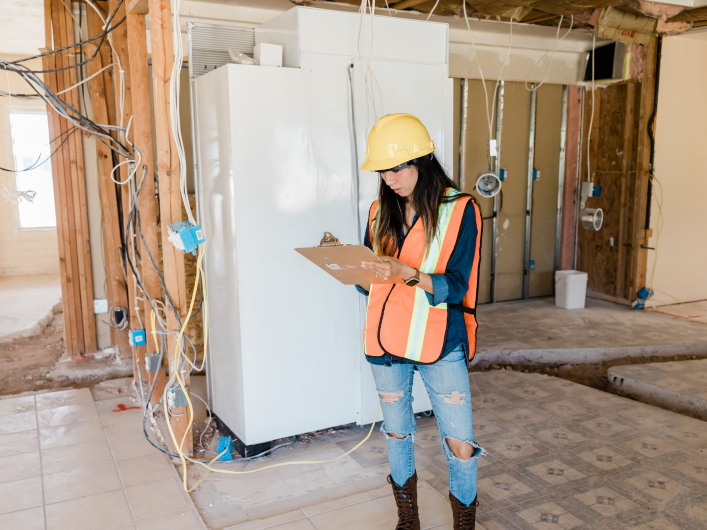
Elekanyani Netshidzivhe is a construction manager at Wilson Bayly Holmes-Ovcon.
by Elekanyani Netshidzivhe
The construction industry is leaving a legacy of skills development and lifechanging improvements in communities across South Africa. As a site coordinator I have experienced the human side of an industry that is often portrayed as severe and cold. The truth is, it is a sector uniquely focused on communal benefit, and on having a direct and positive impact on the lives of everyday people.
While studying civil engineering at the University of Cape Town, I was fascinated by the construction of the Cape Town Stadium in Green Point. The city and the country were then readying itself for the 2010 FIFA World Cup. This fascination lingered, and when I found myself in Johannesburg after completing my studies, I saw construction notices with the WBHO (Wilson Bayly Holmes-Ovcon) logo all over the city. I took a chance and sent an email to WBHO, asking if they have any opportunities for someone like me. Taking that chance changed the trajectory of my life.
WBHO phoned me and offered me an interview. Before long, I started work for the company in Johannesburg. This opened the door for me to many meaningful opportunities.
One of the memorable projects I was able to work on was the Milpark Netcare Hospital ICU in 2020. We finalised and delivered this intensive care unit to Milpark, and three days later that same unit received its first Covid-19 patient in the first wave of the pandemic. It was a moment that made me realise that the construction industry isn’t just about putting up buildings, but it creates life-changing spaces – even potentially life-saving spaces.
Being able to see a final project that saves lives and offer better healthcare is incredibly meaningful to me. So far, I’ve been a part of teams that worked on the construction of no less than five hospitals.
Hospitals are the perfect example of how a construction project can bring human and infrastructure transformation to a community. At another hospital project I worked at in Limpopo, my home province, WBHO’s approach was to organise committees for local community leaders. These committees engaged with the construction processes – making sure the project was integrated into the community, and that everybody is updated about the progress of the project.
That project was also committed to using and training local labour. I have seen so many individuals gaining experience and acquiring skills. Employing workers from local communities and then offering training programmes is another way the construction industry places emphasis on people, on building human capacity, not just building walls and roofs.
This investment in people is further illustrated through a drive for diversity and inclusion within the sector and on construction sites specifically. Building sites are often not seen as inclusive environments for women. I can proudly say that on the project I am currently working, half of the staff in the site office staff are women, showcasing progress towards a more inclusive industry.
There is space for everyone in construction. And those who are currently working on-site are leading the way for others to follow. In the same way I saw the construction of the Stadium in Green Point all those years ago, young people might see new structures and tall buildings going up, and feel inspired to study engineering or building-related qualifications.
Seeing a structure go up, is to see our hopes and plans for the future take shape. That is the other truly human aspect of construction.
So many people I encounter think construction is a big, hard and impersonal industry. They are surprised when I tell them that every time I visit Durban, I go to Ballito Junction, just to see and experience the mall. I am proud to have worked on that massive structure. It is a part of so many lives now. The truth is that we in the construction industry are also connected to and invested in the structures we build, as well as their eventual goals – whether it is saving lives or stimulating the economy.
In a world where construction is often thought of as just concrete, steel and glass, or just large, bulky infrastructure, my experience is that rather, at its core, construction is about people.
More news
- PART 2: CONCRETE IN THE DESIGN OF A UNIQUE LUXURY HOME IN GEORGE, SOUTH AFRICA
- PART 1: CONCRETE IN THE DESIGN OF A UNIQUE LUXURY HOME IN GEORGE, SOUTH AFRICA
- MVULE GARDENS, AFRICA’S LARGEST 3D-PRINTED AFFORDABLE HOUSING PROJECT
- PART 3: HARNESSING THE POTENTIAL OF HIGH SULPHUR FLY ASH IN CONCRETE PRODUCTION
- PART 2: HARNESSING THE POTENTIAL OF HIGH SULPHUR FLY ASH IN CONCRETE PRODUCTION





